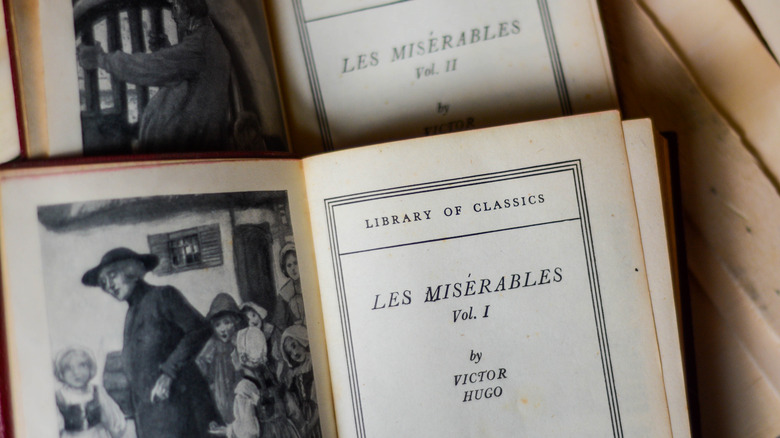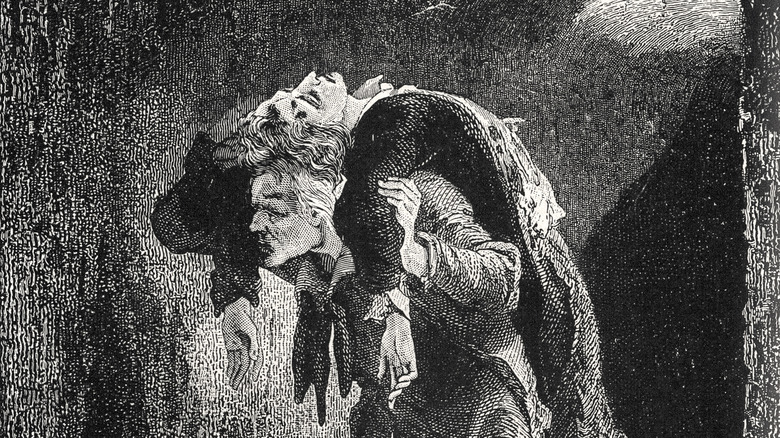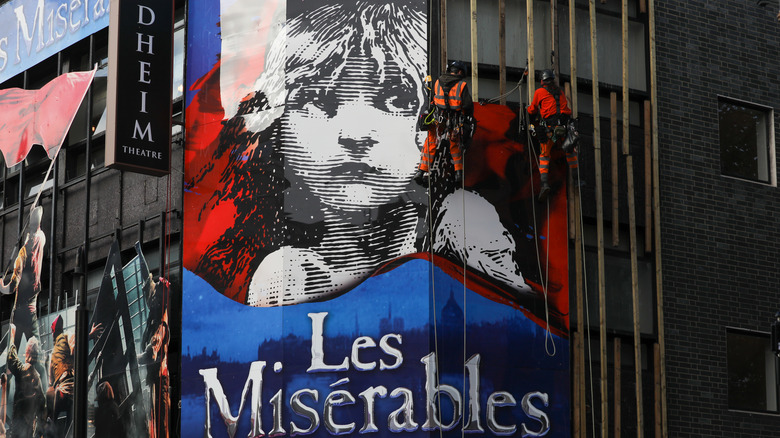How Historically Accurate Is Les Misérables?
For decades, audiences have been packing theaters on Broadway and elsewhere to take in producer Cameron Mackintosh's musical "Les Misérables." The Tony Award-winning production is based on Victor Hugo's 1862 novel of the same name. Per LiveAbout, the book is considered historical fiction in the sense that it takes place within the context of history, in this case France in the early 1800s and, specifically, the Paris Uprising (or June Rebellion) of 1832. However, it's also very much fiction, as the characters and subplots are all the work of Hugo himself.
As it turns out, real-life events and people, beyond the broader historical context, shaped aspects of the book. Two main characters are based at least in part on Hugo himself and a man he once knew. Additionally, the utter poverty, destitution, and squalor that plagued the poor in the book were a very real part of life in those days as well, which Hugo himself was an eyewitness to much of it.
Hero Jean Valjean was based on a real criminal
The hero of "Les Misérables" is Jean Valjean, a criminal who was horribly mistreated by the French justice system of the day for a minor crime, and later became a kindhearted father willing to sacrifice his life for another man he barely knew. In fact, according to The Mirror, Valjean was based on a real criminal that Victor Hugo once knew, although there are multiple differences between the book's hero and his inspiration. Eugene Francois Vidocq did indeed do multiple stints in French prisons, and he escaped multiple times as well. Further, he tried — and often failed — to reform himself later in his life, working with French authorities and is even seen as one of the fathers of modern criminology. Also, he did at one time own a business, and at one time used his impressive strength to rescue a man from a runaway cart — both of which are depicted in the book. However, Vidocq was not quite the kindly father figure that Valjean became; indeed, his crimes were not minor, like stealing a loaf of bread, but more on the order of assault and attempted murder. One of his victims was a woman named Francine, whom he assaulted more than once but who kept coming back to him, and even is believed to have helped him during one of his prison escapes.
Meanwhile, other plot points ascribed to Valjean in the text were the work of Hugo himself. For example, the writer once witnessed a policeman attempt to arrest a man for stealing a loaf of bread, and Hugo himself once intervened as a police officer was attempting to arrest a sex worker.
Fantine's destitution was real
Another key figure in "Les Misérables" is Fantine, the worker at Jean Valjean's factory and mother of Cosette, who is unjustly fired by a cruel boss and then descends into destitution, sex work, and then illness and death. While it's unclear whether there was a real person who inspired the character of Fantine, the poverty and squalor that she faced were real. Indeed, according to The Mirror, a woman without an actual job in those days had few options other becoming a sex worker, a profession rife with disease even during the best of times. Considering the hygiene and nutrition practices at the turn of the 19th century in France, particularly when it came to the poor, and it's no surprise that Fantine's life was greatly shortened when she lost her job.
Further, the narrative records Fantine selling everything — not just jewelry, but also her body, her hair, and her teeth — in order to provide money to Cosette, per LiveAbout. Selling one's teeth was a real means of making money in those days, according to Western Pennsylvania and Ohio Valley Oral and Maxillofacial Surgery, as dentures weren't a thing yet and there was a vigorous market for human teeth. The poor often sold theirs, as wealthy patrons would buy them as replacements, and when that didn't work, grave robbers would steal them from corpses.
The 1832 rebellion was real
The event that drives most of the narrative of the second half of "Les Misérables" is a rebellion in which students, and some locals they were able to recruit, build barricades and go to battle in an attempt at a revolution. That was a real historical event, and the events of June 5-6, 1832 are today known as the June Rebellion or the Paris Uprising, according to History Things. The book largely depicts the basis for the rebellion as it actually happened. On the death of General LaMarque, various anti-monarchist factions united to take control of Paris, with a view toward abolishing the monarchy and, ultimately, elevating the station of the poor.
As depicted in the book, the revolution was a dismal failure. For a few hours one night, a few thousand protesters controlled Paris. However, they were met the next morning by an overwhelming force of an estimated 60,000 men. When the dust had settled, about 150 men on both sides were killed, and a few hundred more were injured. A small handful of protesters who lived through it would be sentenced to death or imprisonment.



